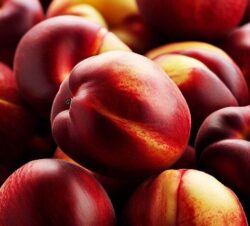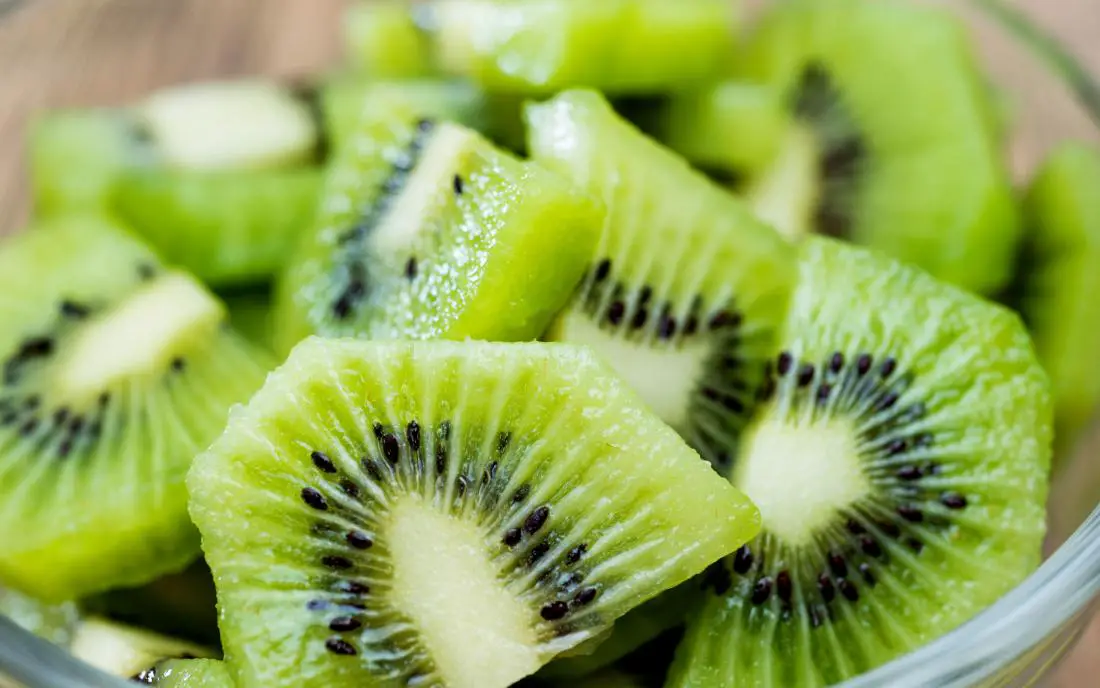10 Easy Steps on How To Grow Fig Tree In Florida
Fig trees (Ficus carica) are a popular fruit tree to grow in Florida due to their adaptability to the state’s warm climate. These trees produce delicious and nutritious fruits that can be enjoyed fresh or used in various culinary applications. Whether you’re a seasoned gardener or a beginner, cultivating fig trees in Florida can be a rewarding experience. This guide will provide you with the essential information and tips to successfully grow fig trees in the Sunshine State.
Choosing the Right Fig Varieties for Florida’s Climate
When selecting fig varieties for Florida, it’s crucial to consider the climate and specific growing conditions in your region. Some fig varieties thrive better in warmer climates, while others are more suitable for cooler areas. Here are a few fig cultivars that have shown success in Florida:
- ‘Celeste‘: This variety is highly recommended for Florida due to its ability to withstand heat, humidity, and occasional cold snaps. ‘Celeste’ figs have a rich, sweet flavor and a reddish-brown skin.
- ‘Brown Turkey‘: Another popular choice for Florida, ‘Brown Turkey’ figs are known for their reliability and adaptability. They have a sweet flavor and a brownish-purple skin.
- ‘Black Mission‘: Although it can be more sensitive to cold temperatures, ‘Black Mission’ figs can still be grown successfully in many parts of Florida. They have a dark purple skin and a sweet, rich taste.
10 Easy Steps on How To Grow Fig Tree In Florida
Growing fig trees in Florida can be a rewarding endeavor. Figs are delicious fruits with a rich history and cultural significance. To ensure successful cultivation, it is important to understand various aspects of fig tree care, such as fertilizing and nutrient management, pruning and training, pest and disease management, protecting from cold snaps or freezing temperatures, harvesting, and troubleshooting common issues. This guide aims to provide valuable insights into growing delicious figs in the unique climate of Florida.
Also Read: Are figs Good for Gastritis?
Step 1. Selecting the Ideal Planting Location
Fig trees require a sunny location to thrive. Choose a spot in your garden that receives at least six hours of direct sunlight each day. Additionally, consider the following factors when selecting the planting location:
- Protection from wind: Find a sheltered area or create windbreaks to protect your fig trees from strong winds, which can damage branches and reduce fruit production.
- Ample space: Ensure that there is enough space for the mature tree to grow. Fig trees can reach heights of 10 to 30 feet and have spreading canopies, so provide sufficient room for their growth.
Step 2. Soil Preparation and Drainage Considerations
Fig trees prefer well-draining soil with a pH level between 6.0 and 6.5. Prior to planting, prepare the soil by following these steps:
- Soil testing: Conduct a soil test to determine its pH level and nutrient content. This will help you identify any necessary soil amendments.
- Organic matter: Incorporate organic matter, such as compost or well-rotted manure, into the soil. This improves drainage and fertility.
- Drainage improvement: If your soil has poor drainage, consider creating raised beds or mounds to ensure excess water can easily drain away.
Step 3. Planting Techniques for Fig Trees
Follow these guidelines for planting fig trees in Florida:
- Dig a hole: Dig a hole twice the width and slightly deeper than the fig tree’s root ball.
- Backfill the hole: Mix the excavated soil with compost or organic matter. Fill the hole with this mixture, leaving enough space for the root ball.
- Planting depth: Place the fig tree in the hole, ensuring that the soil line matches the previous planting depth. Gently fill the hole with soil, firming it around the root ball.
Step 4. Watering and Irrigation Requirements
Proper watering is essential for the establishment and growth of fig trees. Here are some watering tips:
- Initial watering: After planting, water the fig tree thoroughly to settle the soil and eliminate air pockets around the roots.
- Regular watering: Water the tree deeply but infrequently. Fig trees prefer to be moderately dry between watering sessions. As a general guideline, water every 7-10 days, adjusting based on weather conditions and soil moisture.
Step 5. Fertilizing and Nutrient Management:
Figs require proper nutrition to thrive and produce high-quality fruits. Conduct a soil test to determine the nutrient deficiencies or imbalances. In Florida, the soil may be lacking in organic matter and certain nutrients. Amend the soil with organic matter, such as compost, to improve its structure and fertility. Apply a balanced fertilizer, preferably one with higher potassium and phosphorus levels, as excessive nitrogen can lead to excessive vegetative growth at the expense of fruit production. Follow the manufacturer’s instructions for application rates and timings.
Step 6. Pruning and Training Fig Trees in Florida:
Pruning fig trees is essential for maintaining their shape, managing size, and promoting better fruit production. Pruning should be done during the dormant season, typically in late winter or early spring. Remove any dead, damaged, or diseased wood. Thin out crowded branches to improve air circulation and sunlight penetration. Train the tree to a desired shape, such as an open vase or a modified central leader system. Regularly remove suckers from the base of the tree to maintain a single trunk.
Also Read: How to Grow Dragon Fruit from seeds
Step 7. Pest and Disease Management in Florida:
Fig trees in Florida can be susceptible to various pests and diseases. Common pests include fig beetles, aphids, spider mites, and scale insects. Monitor the trees regularly for signs of infestation and take appropriate action. Use insecticidal soaps, neem oil, or other organic insecticides for controlling pests. Diseases like fig rust, root rot, and leaf spot can also affect fig trees. Ensure proper sanitation by removing fallen leaves and debris. Fungicidal sprays may be necessary if diseases are prevalent.
Step 8. Protecting Fig Trees from Cold Snaps or Freezing Temperatures
While fig trees are generally tolerant of Florida’s climate, they can be damaged by occasional cold snaps or freezing temperatures. When frost or freezing is expected, protect the trees by covering them with blankets or frost cloth. Use stakes to create a framework and drape the coverings over the tree, securing them at the base. Additionally, mulching around the base of the tree can provide some insulation to the roots.
Step 9. Harvesting and Enjoying Florida-Grown Figs:
Figs are ready to harvest when they are fully ripe and have a slightly soft texture. Depending on the variety, figs can vary in color from green to brown or purple. Harvest the fruit gently, as they are delicate and can bruise easily. Eat the figs fresh or use them in a variety of culinary creations, such as salads, desserts, or preserves. Figs can also be dried for later use.
Step 10. Troubleshooting Common Issues in Fig Tree Cultivation:
Several issues may arise during fig tree cultivation in Florida. Some common problems include fruit drop, poor fruit set, leaf yellowing, and leaf curling. These issues can be caused by factors such as overwatering, under- or over-fertilization, inadequate sunlight, pest infestations, or diseases. Monitor the trees regularly, adjust irrigation and fertilization practices, address pest and disease issues promptly, and provide optimal growing conditions to mitigate these problems.
Conclusion:
Growing delicious figs in Florida requires attention to key aspects of cultivation, including fertilizing and nutrient management, pruning and training, pest and disease management, protection from cold snaps.
Also Read: How to Keep Squirrel out of Fruits trees
Frequently Asked Questions
Certainly! Here are some frequently asked questions about growing fig trees in Florida:
- Can fig trees tolerate the heat and humidity in Florida?
Yes, fig trees are well adapted to the heat and humidity of Florida. They thrive in warm climates and are generally resilient to the conditions found in the state. - How often should I fertilize my fig trees?
It is recommended to fertilize fig trees in Florida three times a year. Apply fertilizer in early spring, late spring, and early fall to provide a steady supply of nutrients throughout the growing season. - Do fig trees need full sun?
Yes, fig trees prefer full sun exposure. They require at least six to eight hours of direct sunlight each day for optimal growth and fruit production. - What pests are common for fig trees in Florida?
Common pests that can affect fig trees in Florida include fig beetles, aphids, spider mites, and scale insects. Regular monitoring and appropriate pest control measures can help manage these issues. - Are there specific fig tree varieties recommended for Florida?
Several fig tree varieties perform well in Florida, including ‘Celeste,’ ‘Brown Turkey,’ ‘LSU Purple,’ and ‘Black Mission.’ These varieties are known for their adaptability to the state’s climate and produce delicious fruits. - How should I protect my fig trees during a cold snap or freeze?
During cold snaps or freezing temperatures, you can protect your fig trees by covering them with blankets or frost cloth. Creating a framework with stakes and securing the coverings around the tree can provide insulation. Additionally, mulching around the base of the tree can help protect the roots. - When is the best time to prune fig trees in Florida?
Pruning fig trees should be done during the dormant season, typically in late winter or early spring before new growth begins. This allows the tree to recover and prepare for the upcoming growing season. - How do I know when figs are ripe and ready for harvest?
Figs are ready for harvest when they are fully ripe and have a slightly soft texture. The fruit should come off the tree easily when gently pulled. Look for color changes, as different fig varieties exhibit different colors when ripe. - What should I do if my fig tree is not producing fruit?
Several factors can contribute to poor fruit production, including inadequate pollination, nutrient deficiencies, or improper pruning. Ensure proper pollination by attracting pollinators to your garden. Evaluate your fertilization practices and adjust if necessary. Additionally, review your pruning techniques to ensure you’re not removing potential fruiting wood. - How do I address leaf yellowing or curling in my fig tree?
Leaf yellowing or curling can be caused by various factors, including nutrient deficiencies, water stress, pests, or diseases. Conduct a thorough inspection to identify the underlying cause. Adjust irrigation and fertilization practices if needed, address pest or disease issues promptly, and provide optimal growing conditions to promote healthy foliage.
Remember, fig tree care may vary based on specific circumstances and regional variations. It’s always helpful to consult with local experts or extension services for tailored advice to suit your specific location in Florida.


